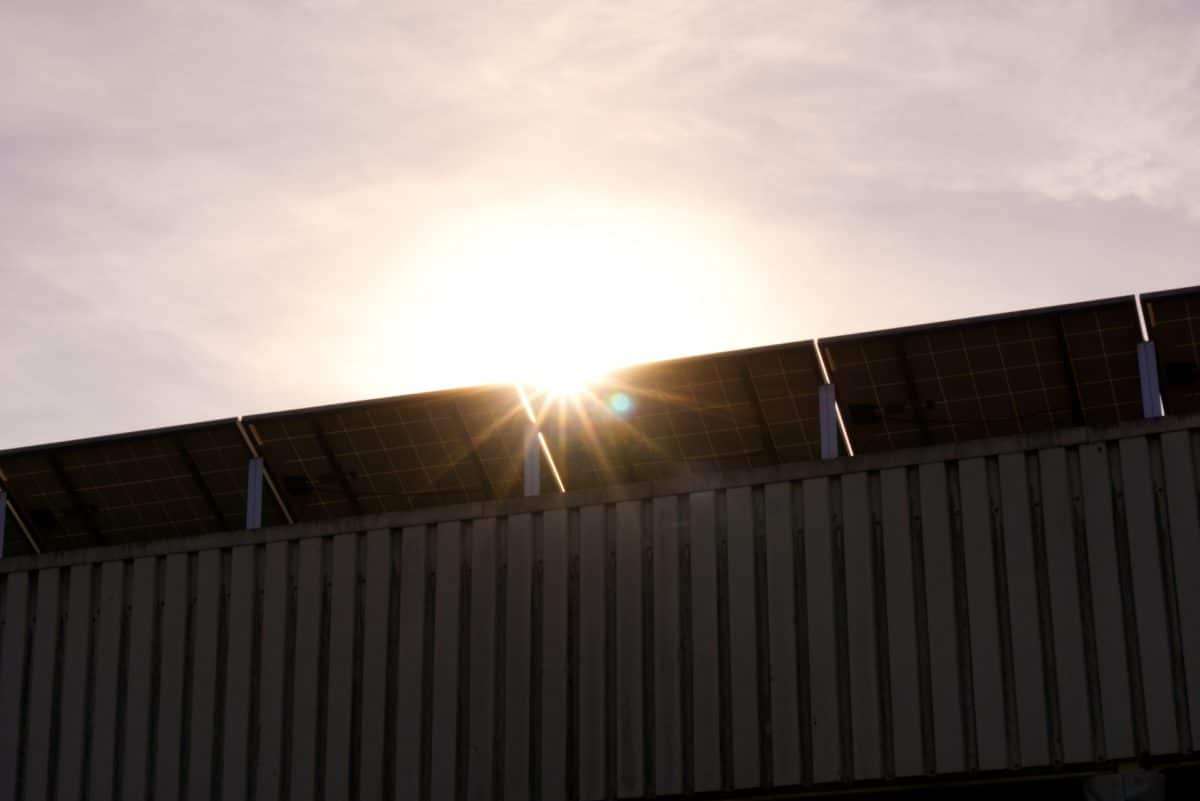From pv magazine International
Scientists from the Foundation for Research and Technology-Hellas (FORTH) in Greece have developed a solar module cooling technique based on radiative cooling and micro-scale patterning.
Radiative cooling occurs when the surface of an object absorbs less radiation from its environment and less than the energy it radiates. When this happens, the surface loses heat to the outer space and a cooling effect can be achieved without the need for power.
Presented in the study Combined nano and micro structuring for enhanced radiative cooling and efficiency of photovoltaic cells, published in scientific reports, the novel system consists of a thin glass radiative cooler designed in nano- and micro-scaled periodic patterns. This device, according to the researchers, can be placed on top of a solar cell to reduce its operating temperature and, at the same time, achieve high optical transparency and high thermal emission.
The coating is based on a two-dimensional subwavelength nanostructured grating, which is imprinted in soda-lime glass and has enhanced mid-infrared emissivity, and a micro-structured grating. “The microscale patterning enhances cooler’s performance in the atmospheric transparency window while the nanopatterning further enhances the optical radiation absorption,” the academics explained. “The combined enhancement is possible because the emissivity enhancement provided by the micro-grating in the thermal wavelengths is not affected by the nano-grating and vice versa.”
The two gratings can be manufactured through laser-induced structuring. “Due to the nature of laser-processing technology, the patterned surfaces can be easily scaled up to large areas that could be used to enhance the light-harvesting in solar cells,” the research team emphasized, adding that the gratings can be realized not only as binary devices but also with appropriate structures of different shapes.
A silicon nitride (Si3N4) anti-reflective coating was also placed on top of the wafer to increase absorptivity. “When we place the nano-micro-grating coating on top of this structure, it results in a higher Si solar absorption of around 0.92%,” the academics further explained. This was achieved, according to them, without increasing the complexity of the cell design.
When the thin radiative cooling coating was placed on top of a silicon wafer, sunlight absorption in silicon increased by around 25.4%. “Temperature reduction and efficiency enhancement was also achieved when we applied the proposed cooler in realistic Si-based solar cells,” the Greek team added. The temperature decrease provided by the nano-micro-grating coating compared to the bare doped silicon was found to be approximately up to 5.8 degrees Celsius.
When it was tested on a commercial solar cell, the cooling technique was found to improve its yield by around 3.0%. “Thus, our findings can significantly impact the PV industry, as well as other radiative cooling applications,” the scientists concluded.
Radiative cooling was recently applied to solar panel cooling by researchers from France’s Institut des Nanotechnologies de Lyon (INL), the Purdue University in the United States, the Catalan Institute of Nanoscience and Nanotechnology and the Instituto de Ciencia de Materiales in Spain, and the Jordan University of Science and Technology and the Australian College of Kuwait.
This content is protected by copyright and may not be reused. If you want to cooperate with us and would like to reuse some of our content, please contact: editors@pv-magazine.com.









By submitting this form you agree to pv magazine using your data for the purposes of publishing your comment.
Your personal data will only be disclosed or otherwise transmitted to third parties for the purposes of spam filtering or if this is necessary for technical maintenance of the website. Any other transfer to third parties will not take place unless this is justified on the basis of applicable data protection regulations or if pv magazine is legally obliged to do so.
You may revoke this consent at any time with effect for the future, in which case your personal data will be deleted immediately. Otherwise, your data will be deleted if pv magazine has processed your request or the purpose of data storage is fulfilled.
Further information on data privacy can be found in our Data Protection Policy.